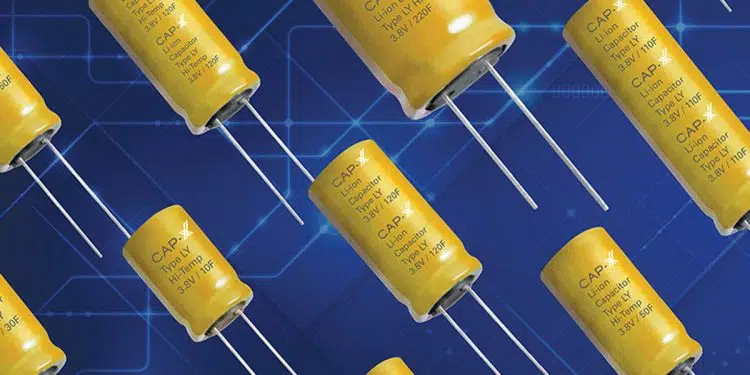CAP-XX Limited, the leading manufacturer of ultra-thin prismatic and high-power cylindrical supercapacitors, today announced it is expanding its product offering to include Lithium-ion Capacitors (LICs).
Also called hybrid supercapacitors, LICs are asymmetric energy storage devices blending two different technologies; the positive electrode is like a supercapacitor, and the negative electrode is similar to a Li-ion battery. LICs are well-suited for power quality, peak-load shaving and micro-energy-harvesting applications that can benefit from their 3.8V operating voltage, high energy and power densities, environmental ruggedness, and durability.
CAP-XX hybrid supercaps maintain key benefits of batteries, including higher operating voltage (3.8V) and increased energy density, while maintaining traditional characteristics of supercapacitors, including rapid charge/discharge capability, environmental friendliness, longevity, and safety.
CAP-XX’s new LICs range from 10F to 220F, are available in standard and high-temperature models, and provide 10-plus years life, or up to 500,000 charge/discharge cycles.
These energy-dense cells can be used as stand-alone power sources or as load-leveling devices to increase the life of an existing primary energy source. They can be used as a storage-power or short-term backup-power source for consumer devices, handheld scanners, data centers, military applications, smart metering, measuring equipment, and other applications requiring more energy at higher voltage in a compact size.
“We aim to help design engineers with all their burst, micro energy harvesting and backup power needs, and Lithium-ion capacitors provide a valuable alternative energy solution for higher-voltage and increased-energy applications,” said Anthony Kongats, CEO at CAP-XX. “Combining the LICs with our existing ultra-thin prismatic and cylindrical supercapacitors forms an extensive product portfolio to meet those needs.”































